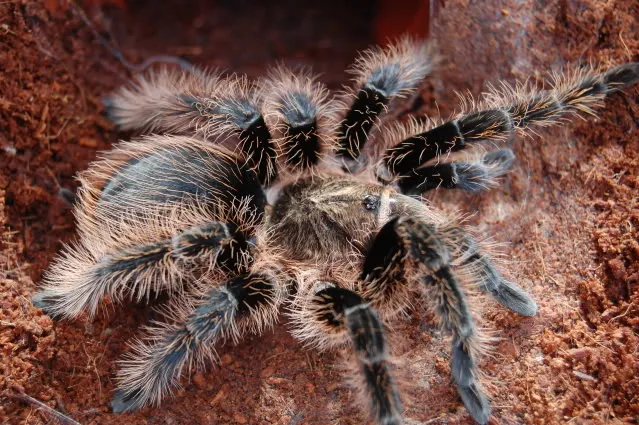Curly Hair Tarantula Care Guide
The Curly Hair Tarantula (Tliltocatl albopilosus), a popular choice for beginner tarantula enthusiasts, is known for its docile nature and striking appearance. These terrestrial tarantulas, native to Central America, are relatively easy to care for, making them a rewarding pet. This comprehensive guide will provide you with all the necessary information to ensure your Curly Hair Tarantula thrives in a healthy and comfortable environment. From setting up their habitat to understanding their feeding habits and recognizing signs of molting, we’ll cover everything you need to know to become a successful tarantula keeper. Proper care not only ensures the well-being of your pet but also enhances your enjoyment of this fascinating arachnid. By following these guidelines, you can create a thriving environment where your Curly Hair Tarantula can flourish for many years to come, allowing you to observe its intriguing behaviors and appreciate its unique beauty.
Habitat Setup for Your Curly Hair Tarantula
Creating a suitable habitat is the foundation of proper Curly Hair Tarantula care. The enclosure should replicate their natural environment, providing a secure and comfortable space. The size, substrate, and overall setup directly impact the tarantula’s health and happiness. It’s essential to consider factors such as temperature, humidity, and hiding places when designing their home. A well-designed enclosure minimizes stress, encourages natural behaviors, and allows you to observe your tarantula’s fascinating life cycle. By investing time in setting up the right habitat, you’re making a significant investment in your pet’s long-term well-being and your enjoyment of owning a Curly Hair Tarantula.
Choosing the Right Enclosure Size
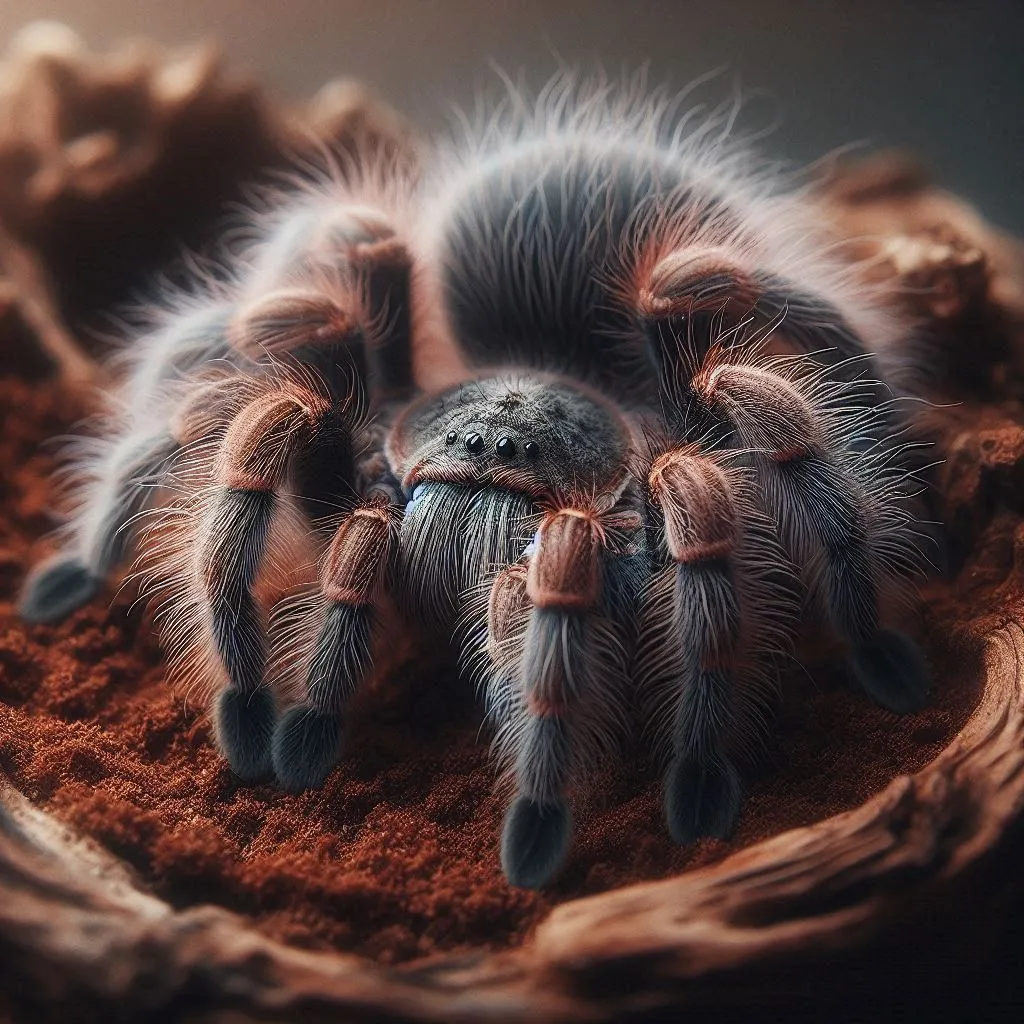
The size of the enclosure is crucial for your Curly Hair Tarantula’s comfort and safety. A good rule of thumb is to provide an enclosure that’s approximately three times the tarantula’s leg span in width and length. For a juvenile, a small plastic container or a 5-10 gallon terrarium is suitable. As the tarantula grows, you’ll need to upgrade to a larger enclosure, typically a 10-20 gallon terrarium for adults. Avoid enclosures that are too large, as this can make it difficult for the tarantula to find food and feel secure. Ensure the enclosure has a secure lid to prevent escapes and adequate ventilation to maintain healthy air quality. The correct enclosure size is not just about space; it’s about providing an environment where your tarantula can thrive, feel safe, and exhibit its natural behaviors.
Substrate Selection for Optimal Comfort
The substrate is the flooring material in your tarantula’s enclosure and serves several important functions, including providing a comfortable surface for burrowing, maintaining humidity, and absorbing waste. The best substrate for Curly Hair Tarantulas is a mix of peat moss, coconut fiber, and a small amount of vermiculite or sphagnum moss. This combination holds moisture well, allows for burrowing, and is easy to clean. Avoid substrates like sand or gravel, as these can be difficult to clean and may not provide enough humidity. The substrate should be deep enough to allow the tarantula to burrow if it chooses, usually around 4-6 inches for adults. Regular maintenance, such as spot cleaning and replacing the substrate periodically, is essential to maintain a healthy environment.
Essential Accessories for Your Tarantula
Providing the right accessories enhances your Curly Hair Tarantula’s quality of life. Include a shallow water dish, easily accessible and always filled with fresh water. This is essential for hydration. Offer a hide, such as a piece of cork bark, a half-log, or a commercially available hide, to provide a secure retreat where the tarantula can feel safe and reduce stress. Artificial plants and other decorations can also be added to create a more natural and enriching environment. Ensure that all accessories are clean, non-toxic, and securely placed to prevent injury. Remember that while accessories add visual appeal, their primary function is to support the tarantula’s physical and psychological well-being.
Humidity and Temperature Control
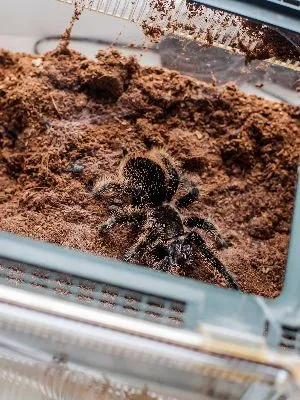
Maintaining the correct humidity and temperature levels is critical for your Curly Hair Tarantula’s health. These tarantulas thrive in a temperature range of 75-85°F (24-29°C). Use a thermometer to monitor the temperature in the enclosure and adjust the heat source, if necessary, to maintain the correct range. The humidity level should be kept between 65-75%. You can achieve this by misting the enclosure with water a few times a week, ensuring the substrate is slightly moist but not waterlogged. Avoid direct sunlight and drafts, as these can cause fluctuations in temperature and humidity. Proper climate control not only supports your tarantula’s well-being but also minimizes health issues and promotes successful molting cycles.
Feeding Your Curly Hair Tarantula
Feeding your Curly Hair Tarantula is a straightforward process, but it’s important to get it right to ensure its health and growth. A well-nourished tarantula is a happy tarantula, so understanding their dietary needs is crucial. The type of food, feeding frequency, and portion sizes will vary depending on the tarantula’s age and size. Always handle food items carefully, and remove any uneaten prey to maintain a clean and healthy environment. Providing the right nutrition is not just about feeding; it’s about contributing to the longevity and overall well-being of your pet. Proper feeding practices will support healthy growth and enable you to enjoy your tarantula for many years to come.
Choosing the Right Food
Curly Hair Tarantulas are primarily insectivores. The best food choices include crickets, mealworms, dubia roaches, and appropriately sized prey items. The size of the food should be no larger than the tarantula’s body. For spiderlings and juveniles, flightless fruit flies and small crickets are ideal. As the tarantula grows, you can increase the size of the prey. It is important to ensure that the insects you provide are healthy and free from pesticides. Gut-loading the insects with nutritious food, such as fresh vegetables and commercial insect food, before feeding them to your tarantula can enhance their nutritional value. Always have a variety of food available to ensure your tarantula receives a balanced diet.
Feeding Frequency and Portion Sizes
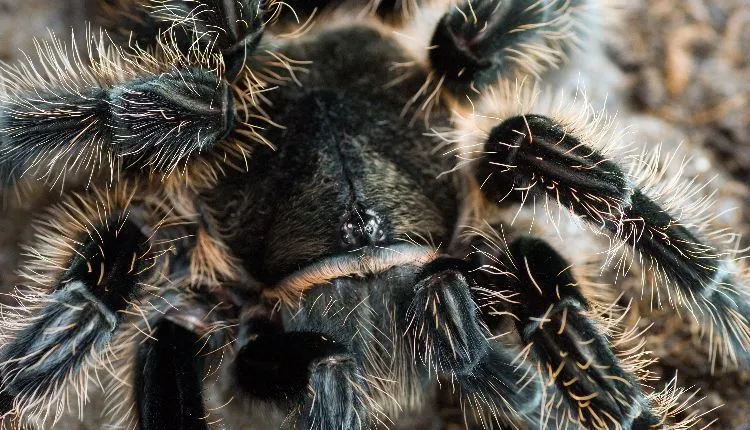
The feeding frequency depends on the age and size of your Curly Hair Tarantula. Spiderlings and juveniles should be fed 2-3 times per week. Adult tarantulas can be fed once a week or every other week. Observe your tarantula’s abdomen; if it appears plump, it is well-fed. Avoid overfeeding, which can lead to health problems. Remove any uneaten prey within 24 hours to prevent stress for the tarantula and maintain a clean environment. Adjust the portion size to match the tarantula’s appetite and size. This is essential for preventing stress. Always provide fresh water and ensure your tarantula has the opportunity to eat and drink when needed.
Watering and Hydration
Providing fresh water is just as important as feeding your tarantula. Always have a shallow water dish available, filled with clean water. Refill the dish daily or whenever the water level is low. The size of the water dish should be appropriate for the size of the tarantula to prevent drowning. In addition to a water dish, misting the enclosure a few times a week can help maintain humidity and provide a source of hydration for the tarantula. Monitor the water dish and humidity levels closely and adjust your watering schedule accordingly. This simple practice plays a crucial role in your tarantula’s overall well-being.
Maintaining Cleanliness
Maintaining a clean enclosure is crucial for the health of your Curly Hair Tarantula. Regular cleaning prevents the build-up of waste, mold, and bacteria, which can cause health issues. Routine maintenance contributes significantly to the longevity and well-being of your pet. Cleaning not only keeps the environment aesthetically pleasing but also supports the tarantula’s health, promotes a stress-free environment, and enhances your overall experience as a tarantula keeper. A clean habitat is the first line of defense against disease and ensures a comfortable living space for your fascinating pet.
Cleaning the Enclosure
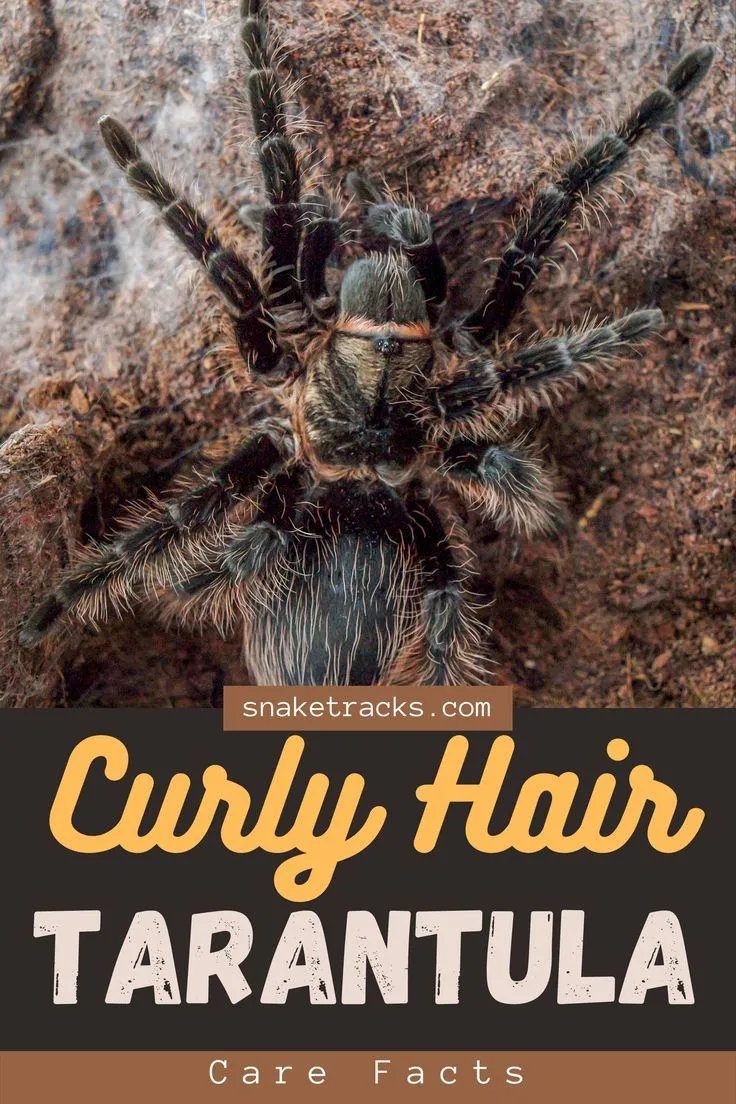
Spot cleaning should be done regularly, at least once a week. Remove any uneaten prey, dead insects, and visible waste from the enclosure. The entire substrate should be replaced every 6-12 months, or more frequently if it becomes heavily soiled. Before cleaning, remove the tarantula to a secure container. Clean the enclosure with warm water and a mild, unscented soap if necessary. Rinse thoroughly to remove any soap residue. Replace all substrate, water dishes, and decorations. Always ensure that the enclosure is completely dry before returning your tarantula to its home.
Dealing with Waste
Tarantulas produce waste, which can accumulate in the enclosure. In addition to removing uneaten food, monitor the enclosure for fecal matter, which appears as small, dark pellets. Remove these promptly to prevent the growth of mold and bacteria. Regular spot cleaning and proper substrate maintenance will help manage waste effectively. Be careful not to disturb the tarantula or stress it during cleaning. If the tarantula is in pre-molt, avoid disturbing its burrow and clean around the area carefully to minimize stress. Proper waste management is a cornerstone of good tarantula care, contributing to a healthy and thriving environment.
Molting Process Explained
Molting is a natural process where tarantulas shed their exoskeletons to grow. During molting, the tarantula becomes vulnerable, so it is essential to provide a safe and undisturbed environment. Understanding the molting process can help you provide the best care for your tarantula during this vulnerable period. Knowing the signs of molting and how to support your tarantula through the process is crucial to the health and longevity of your pet. Proper care during molting will help ensure a successful shed and a healthy tarantula.
Recognizing the Molting Signs
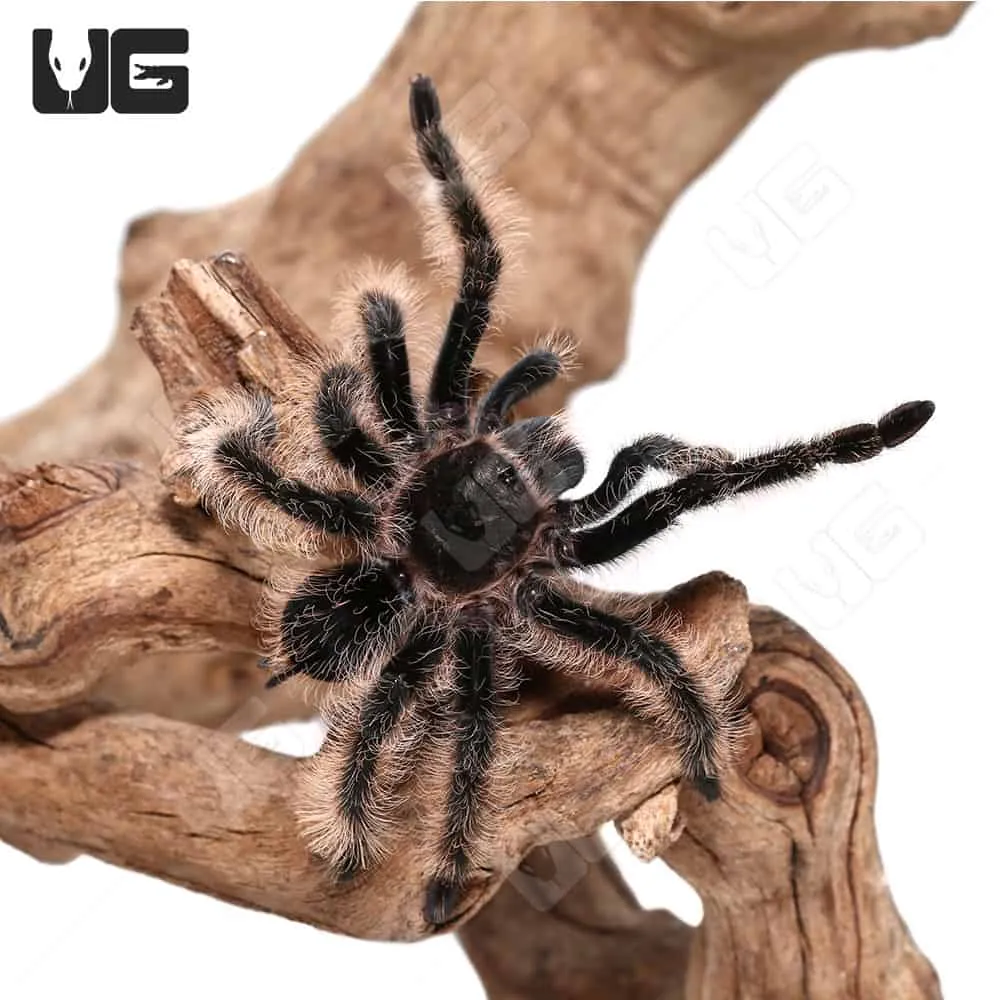
Before molting, your Curly Hair Tarantula may exhibit several signs. It might stop eating, become less active, and spend more time in its hide. The abdomen may appear darker or more translucent. You might also notice the tarantula creating a web mat or sealing itself inside its burrow. Some tarantulas may appear restless or sluggish. If you notice any of these signs, it’s best to avoid disturbing the tarantula and to provide a calm environment. These behaviors indicate the tarantula is preparing to shed its exoskeleton and is in a sensitive state.
What to Do During Molting
During molting, avoid disturbing your tarantula. Do not handle the tarantula or offer food. Maintain proper humidity levels, as this helps the molting process. If the tarantula flips onto its back, it’s molting; do not interfere. After molting, the tarantula’s new exoskeleton will be soft and vulnerable. Wait a few days to a week for the exoskeleton to harden before offering food. It’s best to leave the shed exoskeleton in the enclosure; the tarantula may eat it to regain valuable nutrients. Providing a safe, undisturbed environment ensures that the molting process is successful, supporting the tarantula’s growth and health.
Health and Handling
Understanding the health concerns and practicing safe handling techniques are vital components of Curly Hair Tarantula care. Although these tarantulas are generally hardy, they can be susceptible to certain health issues. Safe handling minimizes the risk of injury to both you and the tarantula. Being aware of potential health issues and adopting the right handling practices will ensure a safer and more rewarding experience for both you and your pet. By prioritizing your tarantula’s health and safety, you’re fostering a strong and positive bond with your fascinating arachnid.
Identifying Common Health Issues
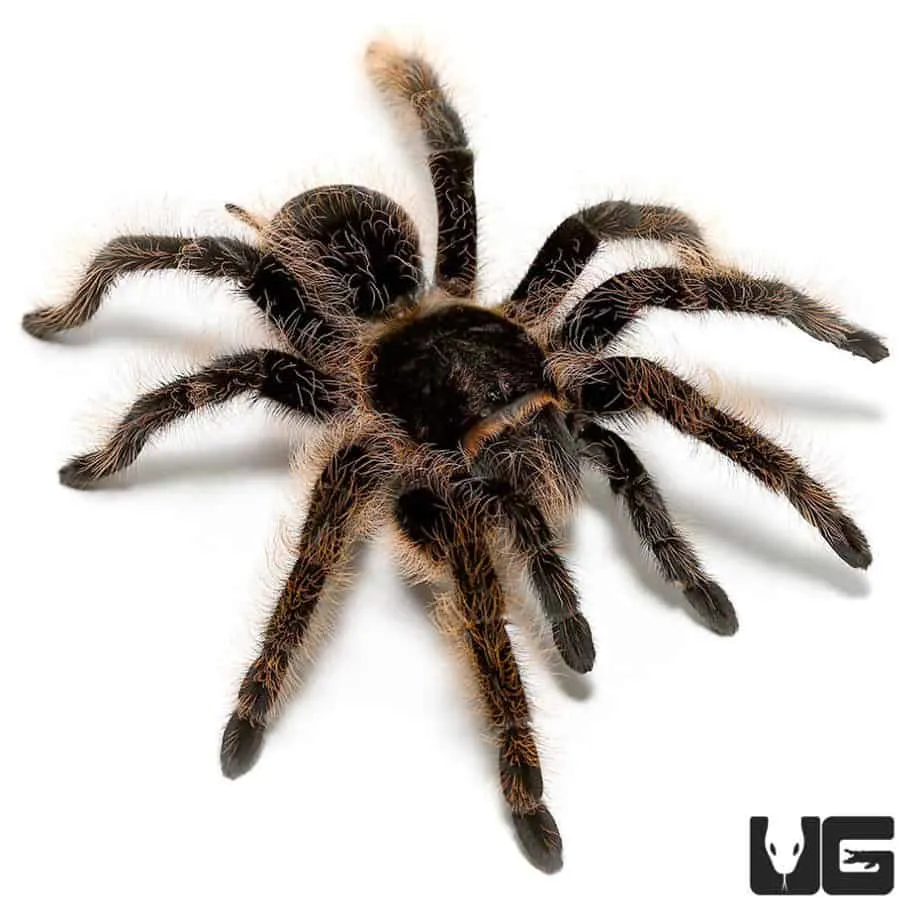
While Curly Hair Tarantulas are relatively hardy, they can still experience health issues. The most common issues include dehydration, parasites, and fungal infections. Signs of dehydration include a shriveled abdomen and lethargy. Parasites can be identified through visual inspection; consult a veterinarian if you suspect a parasite infestation. Fungal infections can manifest as discolored patches on the tarantula’s body. Prevention is key; maintain proper humidity, provide fresh water, and maintain cleanliness. Regularly inspect your tarantula for any signs of illness and consult a veterinarian experienced with exotic pets if you have concerns.
Safe Handling Techniques
Handling a Curly Hair Tarantula is generally not recommended, as it can stress the tarantula and increase the risk of a bite. If handling is necessary, do so gently and carefully. Always handle the tarantula over a soft surface, such as a bed or carpet, to prevent injury if it falls. Avoid sudden movements and be mindful of the tarantula’s body language. Wash your hands thoroughly before and after handling the tarantula. Always supervise children and ensure they understand how to interact safely with the tarantula. Handling should be kept to a minimum to avoid stressing the animal.
Frequently Asked Questions about Curly Hair Tarantulas
Many new and seasoned tarantula keepers often have questions. Here’s a quick guide to some frequently asked questions to help you provide the best possible care for your Curly Hair Tarantula, helping you confidently navigate the responsibilities and joys of owning this fascinating creature. Addressing these common queries can offer more clarity, and ensuring you’re well-informed promotes both the health of your tarantula and your enjoyment of this rewarding hobby.
- How long do Curly Hair Tarantulas live? Typically, females can live for 10-20 years, while males usually live for 5-8 years.
- Are Curly Hair Tarantulas venomous? Yes, they are venomous, but their venom is generally not considered dangerous to humans. The bite can be painful.
- What should I do if my tarantula doesn’t eat? If your tarantula refuses food, ensure the enclosure’s temperature and humidity are correct, and that it is not in pre-molt.
- How often do Curly Hair Tarantulas molt? The molting frequency varies with age; spiderlings molt more often than adults. Adults usually molt once a year or less.
- Can I house multiple Curly Hair Tarantulas together? No, Curly Hair Tarantulas are solitary creatures and should be housed separately. They are prone to cannibalism.
- What should I do if my tarantula falls? If your tarantula falls, carefully examine it for any injuries. Ensure the enclosure and its surroundings are safe. Observe its behavior closely and consult a veterinarian if there are any concerns.
- How can I tell if my tarantula is male or female? Typically, the sex of a Curly Hair Tarantula can be determined after a few molts by examining the exuvia (shed skin) or by the presence of tibial hooks on the male.
- What is the best way to clean up after a molt? Remove the shed skin, and any uneaten prey from the enclosure.
